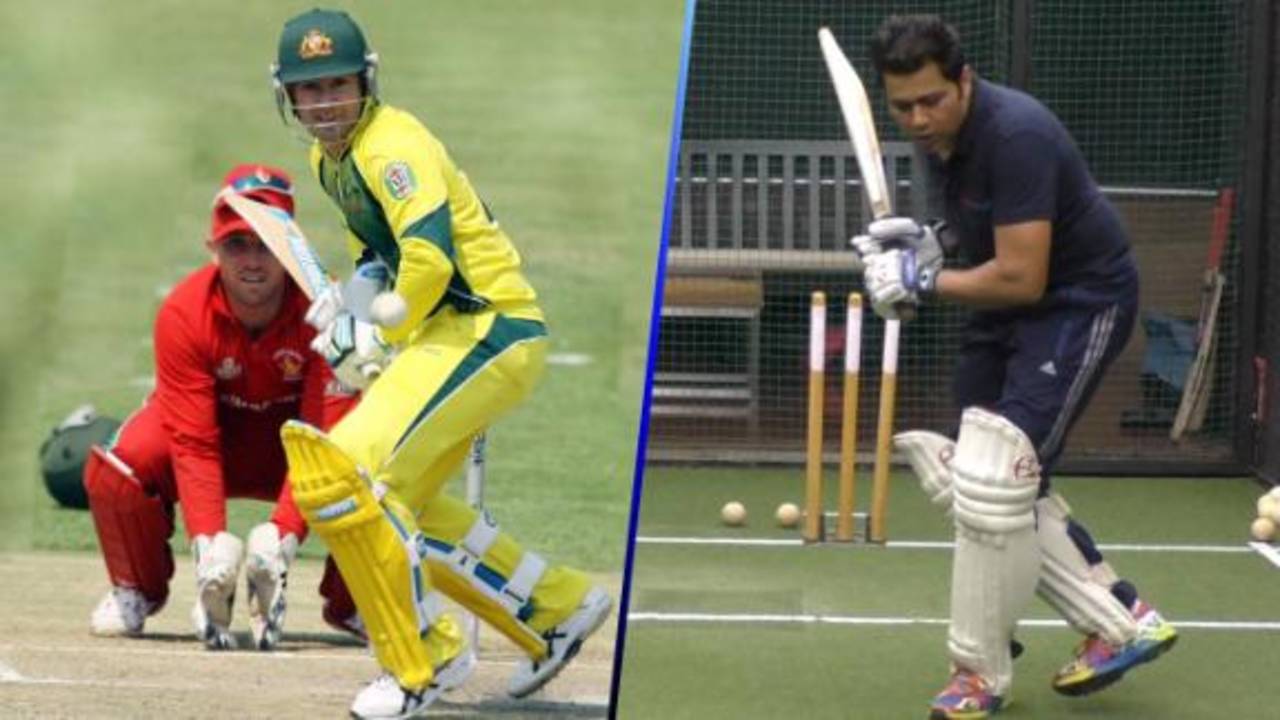Why Clarke might not be as good against spin as we think
The Australian captain is considered world-class against spin, but his numbers in Asia suggest he has some chinks in his armour
Aakash Chopra
04-Aug-2015
The sight of Michael Clarke batting against spinners in his debut Test, in Bangalore, was spectacular from where I was standing at short leg. He put his lightning feet to good use both when he stepped out to get to the pitch of the ball and when he retreated to the deepest corner of the crease if the spinners erred in length.
The spinners he was facing were two of the best in the world - Anil Kumble and Harbhajan Singh. It's one thing for a right-hand batsman to step out against an offie, but it takes a brave man with exceptionally quick feet to dance down the track to Anil Kumble's pace. And Clarke did it with aplomb. The pitch wasn't a typical Indian turner but it was still remarkable for a debutant to dominate the two experienced spinners.
The key to stepping out against spin is to delay the forward movement for as long as possible. Ideally you should leave the crease only after the bowler has released the ball, since that prevents him from altering his line and length. While that's possible to do against bowlers who rely on flight, it's almost impossible to wait so long against someone like Kumble.
In Bangalore, Clarke was leaving the crease even before Kumble had bowled the ball, but he had the technique to change his predetermined shot if the bowler changed his line or length too much.
The trick to his success lay in his first stride, which was a reasonably long one and down the pitch. A short first stride will force you to take a longer second stride to get close to the ball and leave you unbalanced. A longer first stride sets you up for a shorter second stride and will allow you control. Since Clarke's first stride was almost always down the pitch, he could take the second stride in the direction he wished, depending on the line of the ball. He could go across if the delivery was wide, or he could go further down straight if the bowler followed his body.

Clarke's long first stride helps him stay in control and adjust quickly to the length of the ball•Hamish Blair/Getty Images
Another thing that works in Clarke's favour is that he is able to throw his body weight behind the ball whenever he steps out. He never falls backwards, nor is he off balance at the time of impact. In fact, he's always lunging forward while hitting the ball. His excellent transfer of weight, along with his quick feet, make up for the fact that he doesn't sweep spinners, though that is a productive strategy against spin.
Clarke is indeed considered to be one of the best players of spin in the world.
All this should make him equally successful against spin in the subcontinent, but surprisingly, numbers suggest that isn't the case. His Test average in Asia goes down to 37 from about 50 runs per innings overall, and against spin, the numbers fall further.
| Dismissals | Runs | Avg | Run rate | |
| In Asia | 25 | 871 | 34.84 | 3.01 |
| Outside Asia | 38 | 2512 | 66.10 | 3.54 |
What could be the reasons for such a dip in the efficiency of a batsman heralded as one of the better players of spin in the world?
For starters, his habit of stepping out before the ball has left the bowler's hand works against him when there's more purchase for spinners off the surface. In Australia, South Africa or England, the ball doesn't deviate a lot for spinners after pitching. So even if Clarke is a fair distance from the ball when stepping out, he manages to cover the movement. But it gets him in trouble on rank turners.
He has the habit of stepping out and defending, which is all right on flat pitches but not recommended on ones that turn square. Most coaches in the subcontinent will tell you that stepping out is an aggressive option, employed to play attacking shots and not to defend. Once in a while checking the shot at the last moment because you couldn't reach the pitch of the ball is acceptable, but if it's a regular practice, you're better off staying in the crease to defend.

You need to be able to score boundaries from inside the crease against spin in the subcontinent•Getty Images
Using your feet to get to the pitch of the ball is a great way of playing spin, but on turning pitches, it's essential to be able to score boundaries without needing to step out of the crease. I've seen the likes of Virender Sehwag, VVS Laxman and Andy Flower do this. Clarke doesn't. He also goes hard at the ball while defending from the crease, which, once again, is not advisable on turning pitches.
Since a good player of pace should be judged on how he performs in seamer-friendly conditions, it's only fair to have a closer look at Clarke's record against spin when the ball turns square and asks uncomfortable questions. He's still a very good player of spin, but perhaps not as good as the world considers him to be.
Have a technical question about batting, either your own or about an international player? Tweet it with #AskTheInsider. Aakash Chopra will answer the best of them on video
Former India opener Aakash Chopra is the author of Out of the Blue, an account of Rajasthan's 2010-11 Ranji Trophy victory. His website is here. @cricketaakash
